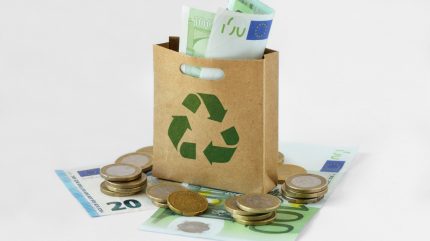
Investors once saw packaging as an unglamorous corner of the market. Today, it has become a focal point of the transition to a circular economy, with sustainable packaging funds attracting growing attention.
Rising consumer demand for eco-friendly products, combined with government regulations on waste reduction, is driving capital into companies that are redesigning how goods are wrapped, transported and recycled.

Discover B2B Marketing That Performs
Combine business intelligence and editorial excellence to reach engaged professionals across 36 leading media platforms.
The global packaging industry is worth trillions of pounds, yet much of it relies on single-use plastics that clog landfills and oceans.
As awareness of the environmental cost mounts, both venture capitalists and institutional investors are recognising that innovation in packaging is not only essential for the planet but also a lucrative opportunity.
Why sustainable packaging funds are gaining momentum
The surge of interest in sustainable investment reflects a broader shift in finance. Pension funds, private equity firms and impact investors are under pressure to align portfolios with environmental, social and governance (ESG) principles.
Packaging sits at the intersection of these themes: it affects carbon emissions, waste management and consumer behaviour.

US Tariffs are shifting - will you react or anticipate?
Don’t let policy changes catch you off guard. Stay proactive with real-time data and expert analysis.
By GlobalDataSeveral dedicated funds have emerged to capture this opportunity. For instance, the Emerald Sustainable Packaging Innovation Fund supports start-ups developing recyclable and compostable materials.
Meanwhile, Collateral Good’s Packaging Innovation Fund in Europe is channelling capital into companies working on circular packaging systems. Large consumer goods firms such as Mars have also established corporate funds to accelerate research and scale solutions that can replace traditional plastics.
The attraction is clear. Markets are being reshaped by legislation such as the EU’s Packaging and Packaging Waste Directive and the UK’s Extended Producer Responsibility scheme.
Companies that fail to adapt face mounting costs, while innovators stand to benefit from regulatory tailwinds. For investors, this creates a rare alignment of sustainability goals with strong financial incentives.
Where the money is flowing
Investment is targeting a wide range of technologies. Biodegradable films made from plant starches, compostable beverage holders, and reusable container systems are just a few of the breakthroughs attracting funding.
Recycling infrastructure is also a priority, with funds backing digital platforms that track materials through supply chains and facilities capable of handling mixed or difficult-to-recycle plastics.
Geographically, Europe has taken the lead due to stringent regulations and consumer activism. However, funds in North America and Asia are rapidly catching up, driven by both policy changes and corporate sustainability pledges.
For example, several Australian impact funds, including the Planet Ark Circular Future Fund, have invested heavily in waste reduction projects that cover packaging and recycling.
Institutional investors increasingly view this as more than a niche market. Packaging innovations are directly linked to wider themes such as clean energy, food systems and sustainable supply chains.
This integration gives funds a broader platform for growth, while diversifying risk across multiple industries.
Challenges and long-term outlook
Despite the momentum, investing in sustainable packaging is not without hurdles. Scaling new materials often requires significant upfront capital, and many alternatives still face cost barriers compared to conventional plastics.
Infrastructure gaps remain a major challenge: compostable packaging, for instance, has limited value if local waste management facilities cannot process it.
Yet the long-term outlook remains strong. Consumer expectations are changing rapidly, with surveys consistently showing a willingness to pay more for products with sustainable packaging.
Retailers and multinational brands are responding by embedding packaging targets into their ESG strategies. As supply chains adapt, economies of scale should bring costs down and make sustainable options mainstream.
For investors, the key will be patience and selectivity. Not every innovation will succeed, but those funds that identify scalable solutions capable of integrating with global logistics stand to gain significantly.
The fact that some of the world’s largest companies and investment firms are already backing these initiatives suggests the sector is set for steady growth.
The takeaway
The rise of sustainable packaging funds illustrates how finance is evolving to meet the demands of a resource-conscious world.
Once overlooked, packaging has become central to debates on climate change, waste reduction and responsible consumption. As legislation tightens and consumer preferences shift, investment in sustainable packaging is likely to grow from niche to necessity.
For businesses, innovators and investors alike, the message is clear: the future of packaging lies not in single-use plastics but in solutions that align profitability with planetary health.
Those willing to invest early in this transformation may find themselves not just reducing waste but also unwrapping substantial returns.





